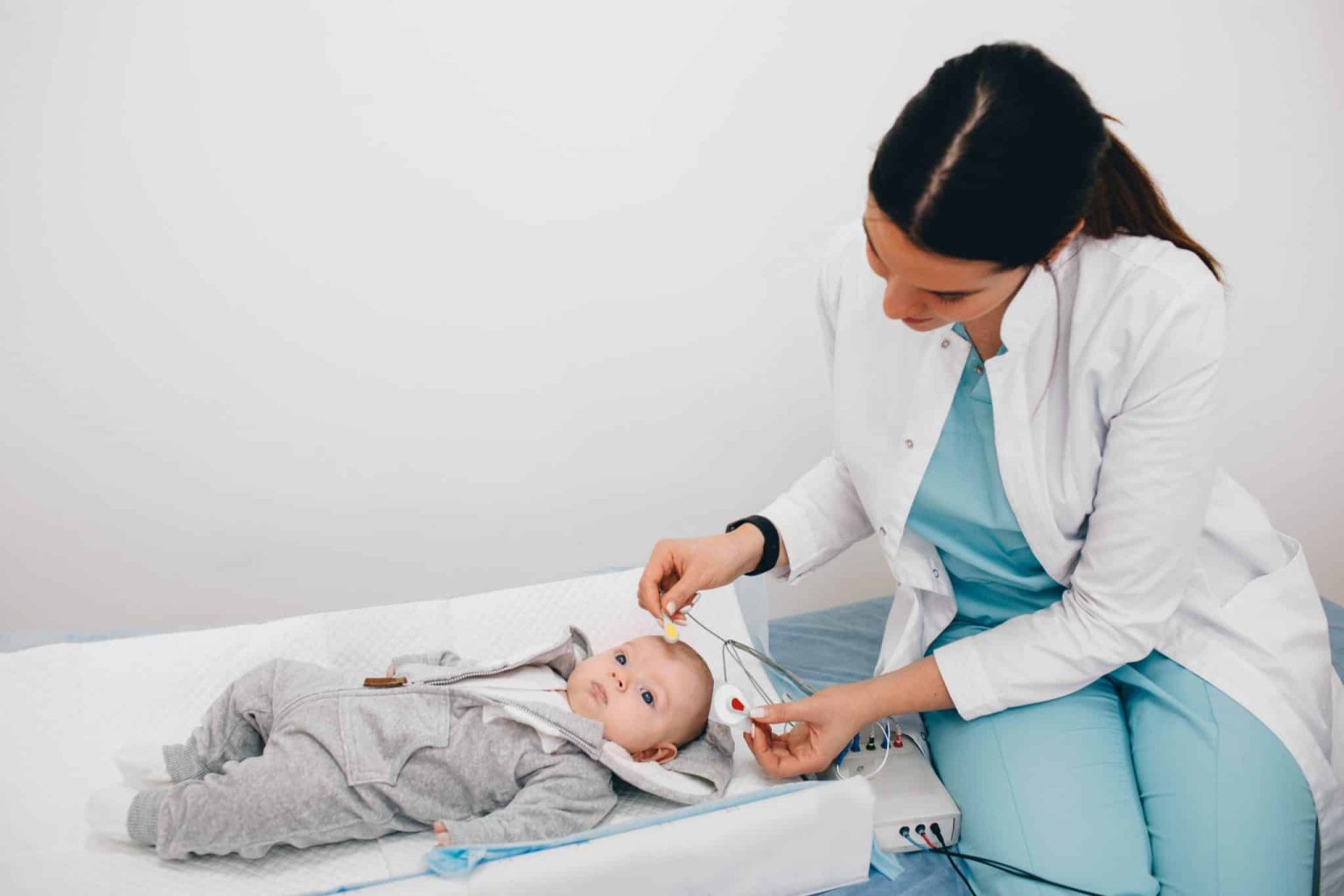Your Newborn Doesn’t Have to Live in Silence
Your voice welcoming them into the world is usually one of the first sounds your baby will hear. However, some newborns may not immediately be able to connect with this because of hearing loss. At Sacramento Ear, Nose & Throat, we can partner with you to determine if your child is having trouble hearing and find the treatment plan that will work best.
How Many Children Are Born with Hearing Loss?

Hearing loss is the most common congenital disability. In 2019, almost 6,000 infants born in the U.S. were diagnosed with hearing loss. This number represents two to three out of 1,000 babies.
According to the CDC, more than 98% of newborns were screened for hearing loss in 2019, and most states require that hospitals perform them at birth. These tests may be missed during home births, but can be carried out by a trained specialist.
How Is Newborn Hearing Loss Diagnosed?
Newborns usually have their hearing screened by an Otoacoustic Emissions (OAE) test shortly after being born. Should they fail, they then receive an Auditory Brainstem Response (ABR) test.
Though approximately 10% of infants do not pass these initial tests, this is sometimes due to movement or crying during the exam, or a buildup of fluid in the ears. Follow-up testing will determine if your child is truly experiencing hearing loss.
Does My Child Have Hearing Loss?
In some cases, hearing loss can develop shortly after birth. If your baby experiences any of the following symptoms, our audiologist can perform additional testing and connect your child with any necessary treatment.
- Failure to startle when exposed to a sudden, loud noise
- No recognition or response to your voice
- Limited, poor or nonexistent speech
- Inattentiveness
- Difficulty learning
What Causes Hearing Loss in Infants?
Risk factors for newborn hearing loss include premature birth, family history of similar conditions, frequent or chronic ear infections, infections like meningitis or cytomegalovirus and exposure to loud noises.
How Is Hearing Loss in Babies Treated?
Our provider will determine what treatment will work best for your child. Depending on the type and extent of hearing loss, potential options might include hearing aids or cochlear implants.
Treating Newborn Hearing Loss Early Is Critical
From their first days, babies rely on their hearing to develop speech and language skills. Additionally, it’s useful for bonding with parents and loved ones by connecting them to the sound of their voices.
We’re Here for Your Family
Treatment depends upon the type and extent of hearing loss your child experiences. Hearing aids, assistive listening devices or cochlear implants are all commonly used to treat hearing loss. Your child’s audiologist is best qualified to make a recommendation based on their individual situation.
Call Us Today!
Sacramento, CA(916) 736-3399Call our Sacramento office at (916) 736-3399
Roseville (Eureka Rd)(916) 736-6644Call our Roseville office at (916) 736-6644
Folsom (Creekside)(916) 984-8830Call our Folsom office at (916) 984-8830
Lodi(209) 333-8510Call our Lodi office at (209) 333-8510
Stockton(209) 952-0483Call our Stockton office at (209) 952-0483
Fair Oaks(916) 966-2700Call our Fair Oaks office at (916) 966-2700
Roseville (Medical Plaza Dr)(916) 782-1291Call our Roseville office at (916) 782-1291
Folsom (Hana Way)(916) 736-6644Call our Folsom office at (916) 736-6644
Sacramento, CA(916) 736-6644Call our Sacramento office at (916) 736-6644
